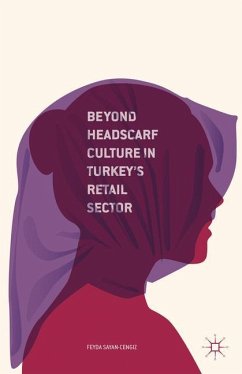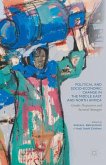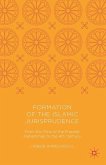Based on extensive fieldwork, this study looks into the meanings of the headscarf among lower middle class women in Turkey. The book explains how the connotations of Islamic identity attached to the headscarf unfold in the context of insecure, low status retail employment.
The headscarf issue draws a great deal of public and academic attention in Turkey, yet the debate largely unfolds within the contours of the discussions over modernization, Westernization, and the Islamic / secular divide. Rarely is there a discussion about how the connotations of the headscarf shift across cleavages of class and status among women wearing it. Instead, the headscarf is typically portrayed as a symbol of Islamic identity, a 'cover' that brackets social inequalities other than those based on a supposed 'clash of identities.' This study looks beyond these contours by contextualizing the headscarf discussion in an insecure and low-status private sector labor market - namely, retail sales. Based on in-depth interviews, focus groups with lower-middle-class saleswomen with headscarves, and ethnographic study in five cities of Turkey, this book argues that the meanings of the headscarf are continuously negotiated within the quest for social and economic security.
The headscarf issue draws a great deal of public and academic attention in Turkey, yet the debate largely unfolds within the contours of the discussions over modernization, Westernization, and the Islamic / secular divide. Rarely is there a discussion about how the connotations of the headscarf shift across cleavages of class and status among women wearing it. Instead, the headscarf is typically portrayed as a symbol of Islamic identity, a 'cover' that brackets social inequalities other than those based on a supposed 'clash of identities.' This study looks beyond these contours by contextualizing the headscarf discussion in an insecure and low-status private sector labor market - namely, retail sales. Based on in-depth interviews, focus groups with lower-middle-class saleswomen with headscarves, and ethnographic study in five cities of Turkey, this book argues that the meanings of the headscarf are continuously negotiated within the quest for social and economic security.
After careful review of the manuscript chapters that I've received along with the other materials, I would recommend strong support for this book project. The research framed by this project offers to have wide purchase in the academic realm. It is an excellent piece of original research that is without a doubt addressing a gap in the current literature and providing a great deal of complexity beyond the current approaches to the issue of the headscarf in Turkey. Thus, it would be a great asset to future academic research on the headscarf issue in Turkey. Furthermore, because of the nature of the topic and the quality writing of the author, a book stemming from this project would likely be a desirable text for undergraduate and graduate courses with themes on Turkey, Islam and societies, women in Muslim-majority countries. There is much to be praised about the writing style of the author and the effective way that the text engages a broader audience. In the chapters given, numerous instances exist in which the author very effectively lets the women she is interviewing speak, but also frames this within poignant insight into the issues at stake. Thus, I would argue that a finished product stemming from this project would have broad academic appeal.
The author is absolutely correct in arguing for the uniqueness of this study on several accounts. While I agree, also with the author, that previous studies did much to contribute to our knowledge of the headscarf and challenge previously held assumptions, their participant subjects were all typically members of a particular social class-economically speaking, they tended to be women from middle/upper-middle to upper class, and they have tended to be relegated entirely to the educated elite. This has led the discussion of the headscarf and decisions to cover or not cover to be constrained by a limited set of issues. Dr. Sayan-Cengiz provides us with a set of participant subjects-less educated, lower-middle class women-that gives us a whole new range of issues that help us not only understand this underrepresented (in the literature) group of women, but also Turkish urban society in general. What is also particularly valuable in this author's research is both the level of neutrality toward the topic by the author and the particular contexts of the women provide angles to the issue that complicate the more common dichotomies within which previous research has been framed-i.e. that wearing the headscarf means this or that, or that these women are active autonomous subjects or the passive objects upon whose bodies certain agents propel their social agendas. Her research effectively challenges us to conclude that, in many cases, none of these categories might be relevant. For all of these reasons I would strongly recommend moving forward with this project with a view toward publication.
With this in mind, I do have suggestions for ways in which this project could be revised/developed to hone further the excellent elements of the study already present. First of all, the planned structure of the work seems to still be too beholden to its previous dissertation structure (in fact, in the existing chapters, the author might want to do a find/replace for the word 'dissertation,' which is still lurking in the text at various spots. I only had access to chapter one and the chapter summaries for 2 and 3, but I would strongly recommend restructuring these more efficiently for the purpose of the book project. Currently, chapter 1 starts out well, but gets bogged down with too many objectives that have to be repeated anyway in future chapters. The introduction to the introduction could be a bit more captivating-why not start with an intriguing anecdote that captures or draws the reader in to the relevance of what you are doing before it gets bogged down with telling us what the book will do. Chapter one should present the problem/context and then the ultimate research question, point out the releva
The author is absolutely correct in arguing for the uniqueness of this study on several accounts. While I agree, also with the author, that previous studies did much to contribute to our knowledge of the headscarf and challenge previously held assumptions, their participant subjects were all typically members of a particular social class-economically speaking, they tended to be women from middle/upper-middle to upper class, and they have tended to be relegated entirely to the educated elite. This has led the discussion of the headscarf and decisions to cover or not cover to be constrained by a limited set of issues. Dr. Sayan-Cengiz provides us with a set of participant subjects-less educated, lower-middle class women-that gives us a whole new range of issues that help us not only understand this underrepresented (in the literature) group of women, but also Turkish urban society in general. What is also particularly valuable in this author's research is both the level of neutrality toward the topic by the author and the particular contexts of the women provide angles to the issue that complicate the more common dichotomies within which previous research has been framed-i.e. that wearing the headscarf means this or that, or that these women are active autonomous subjects or the passive objects upon whose bodies certain agents propel their social agendas. Her research effectively challenges us to conclude that, in many cases, none of these categories might be relevant. For all of these reasons I would strongly recommend moving forward with this project with a view toward publication.
With this in mind, I do have suggestions for ways in which this project could be revised/developed to hone further the excellent elements of the study already present. First of all, the planned structure of the work seems to still be too beholden to its previous dissertation structure (in fact, in the existing chapters, the author might want to do a find/replace for the word 'dissertation,' which is still lurking in the text at various spots. I only had access to chapter one and the chapter summaries for 2 and 3, but I would strongly recommend restructuring these more efficiently for the purpose of the book project. Currently, chapter 1 starts out well, but gets bogged down with too many objectives that have to be repeated anyway in future chapters. The introduction to the introduction could be a bit more captivating-why not start with an intriguing anecdote that captures or draws the reader in to the relevance of what you are doing before it gets bogged down with telling us what the book will do. Chapter one should present the problem/context and then the ultimate research question, point out the releva








